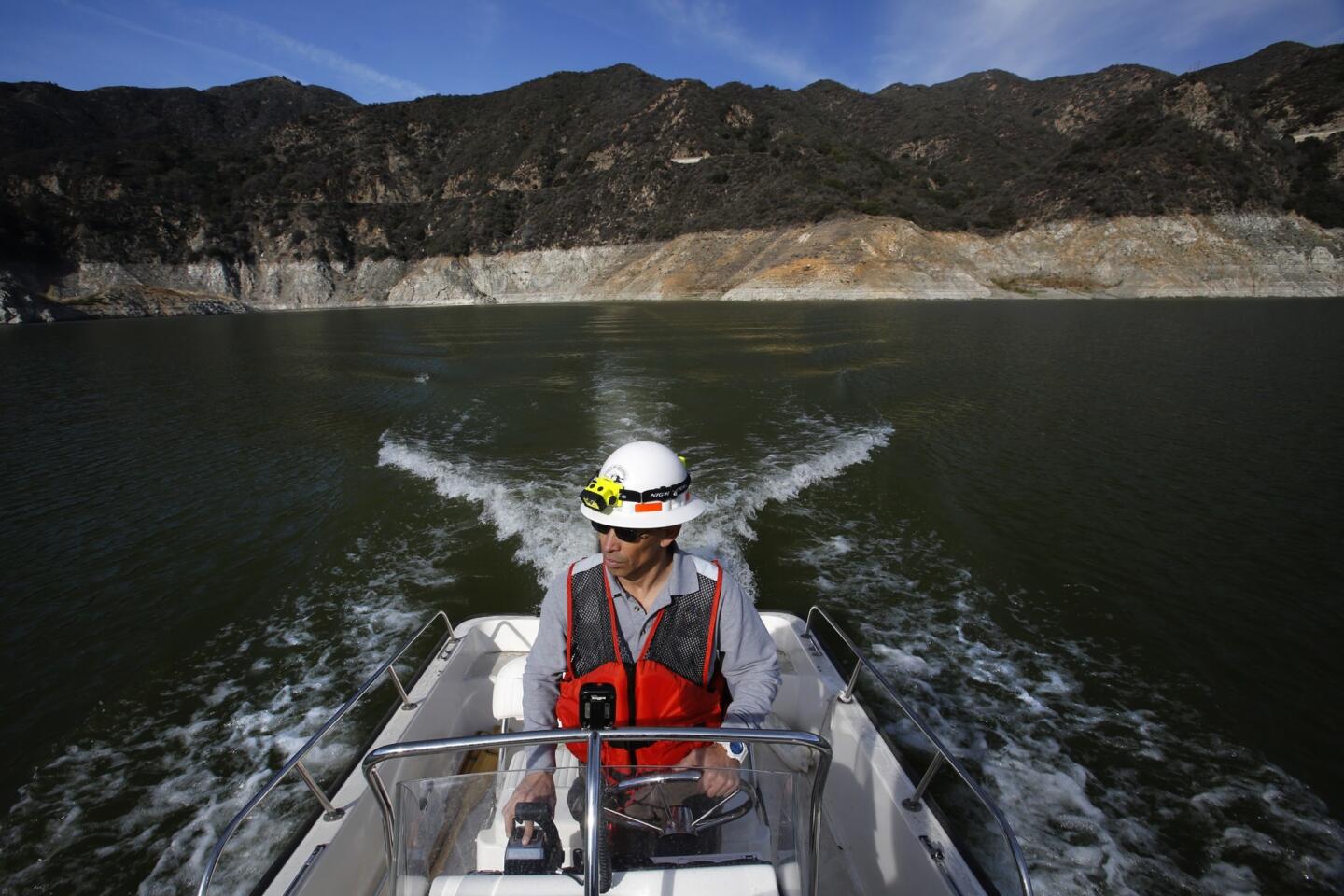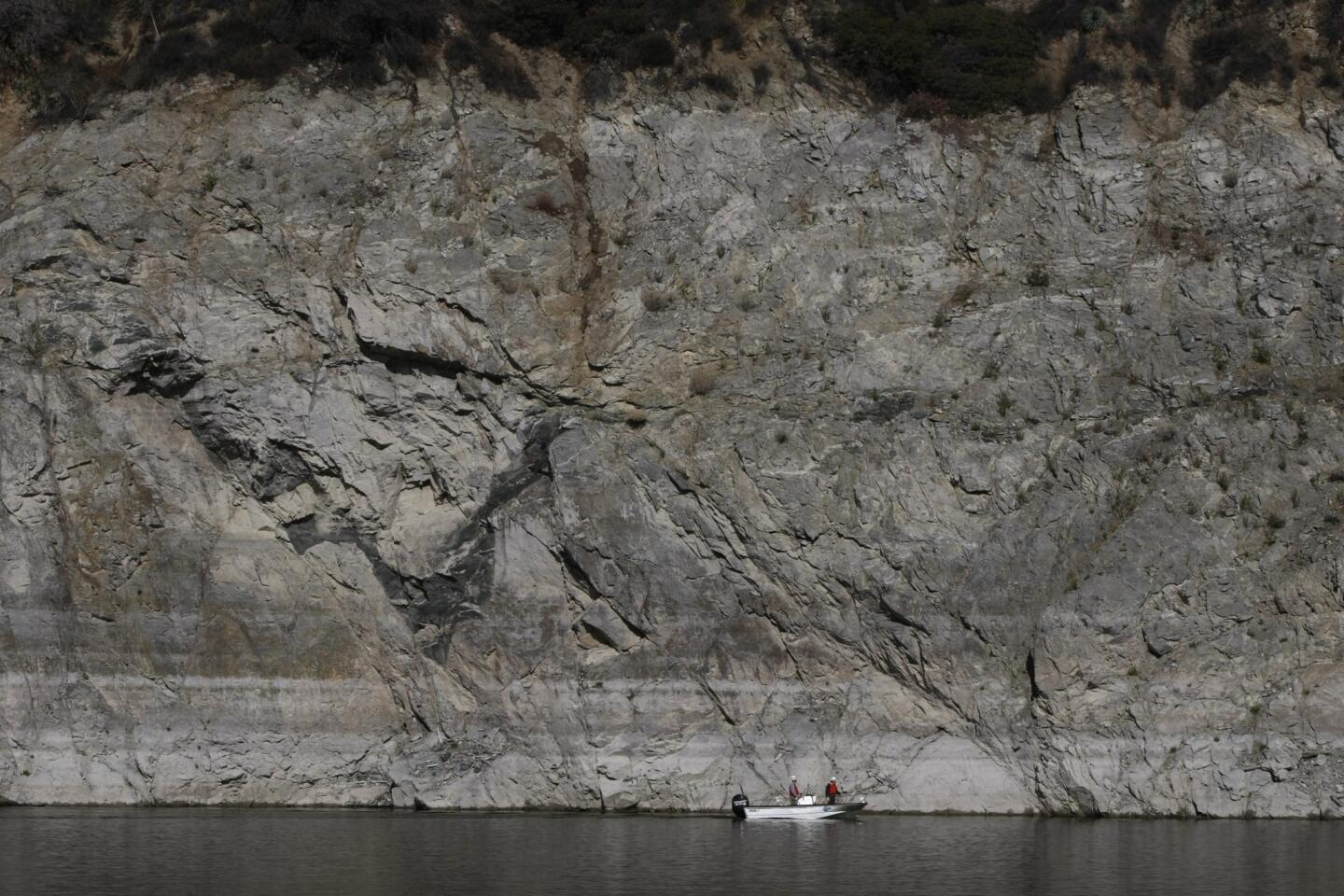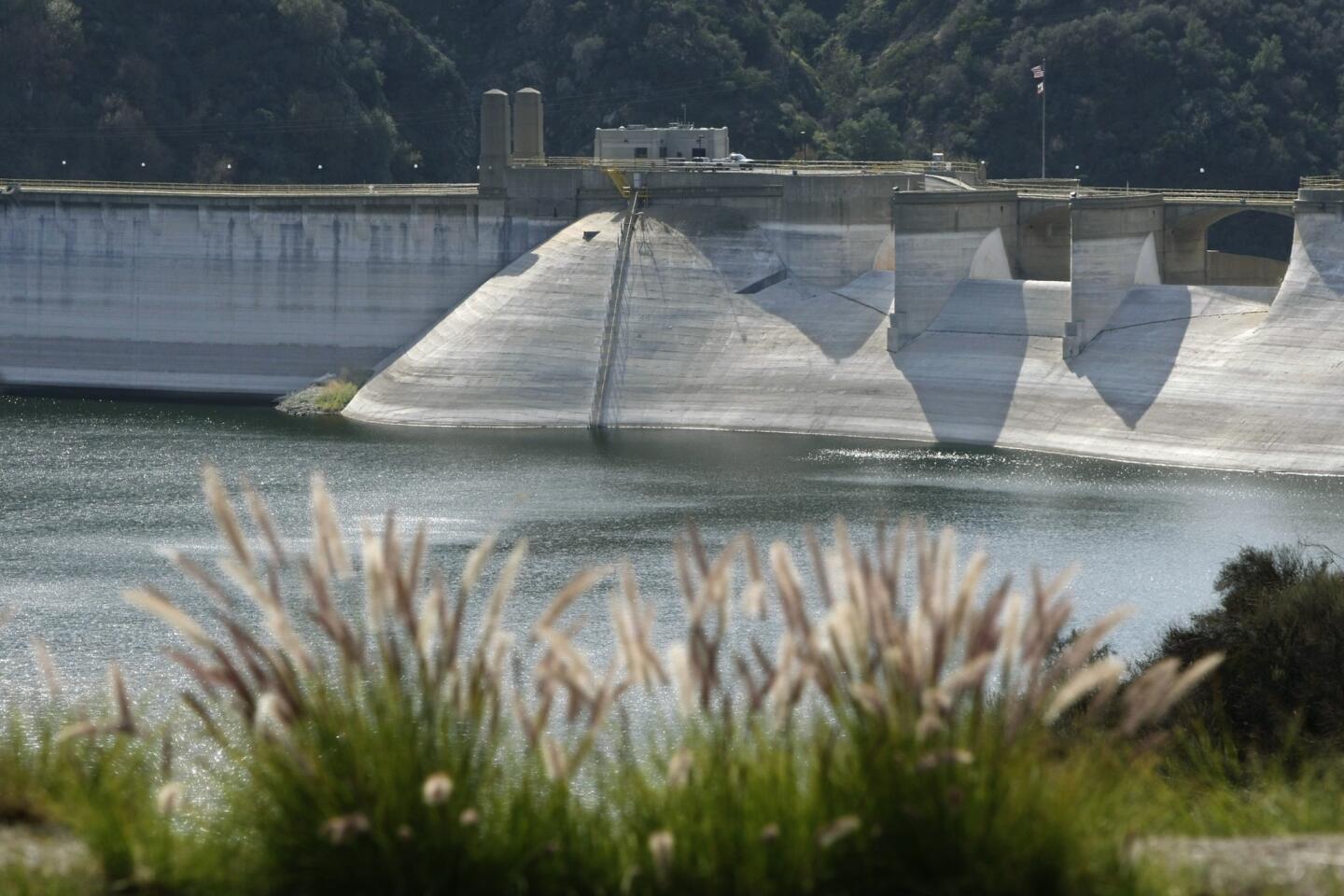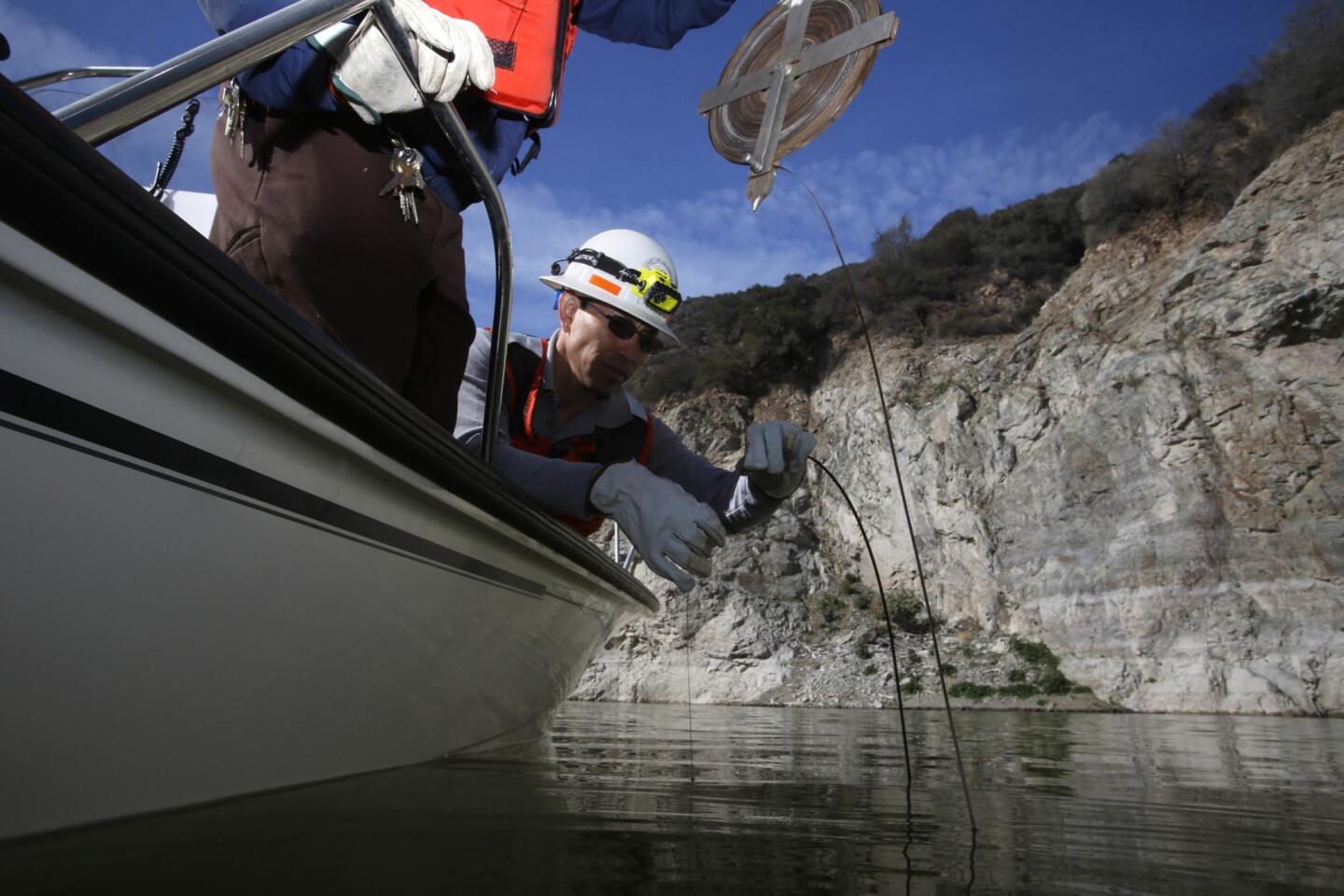San Gabriel Mountain dams could get major fill-up from storm system
- Share via
The reservoirs behind 14 major dams that line the front range of the San Gabriel Mountains — nearly empty after two years of drought — could rise significantly from the forecasted deluge over the next three days, public works officials said.
The storm system could drop up to 6 inches of rain, which would dramatically reverse the current conditions, in which water levels are 70 feet below the maximum in some cases, officials said.
Although there is no danger the dams will be breached, officials on Thursday still guarded against the possibility of mudslides in fire-ravaged areas.
In response to the possibility of debris flows from areas burned in January’s Colby fire, Azusa and Glendora issued a mandatory evacuation order for residents whose homes are nestled along the foothills.
In Glendora, 1,000 homes were in the path of possible mudslides. City officials want to avoid a repeat of a 1969 mudslide disaster that killed 34 people and destroyed 200 homes.
A relatively small storm Thursday deposited about 1,000 acre-feet of water — worth $1 million on the wholesale market — in the aquifers under Los Angeles.
The system over the next three days will probably deposit a windfall behind the dams that typically hold a third of Los Angeles County’s water supply, said Adam Walden, senior civil engineer at the public works department.
“Right now, we have a lot of room in our system and the goal is not to let anything escape to the ocean,” he said.
Because of the vast drainage from the mountains surrounding the L.A. Basin, the dams could fill at a stunning rate.
It’s happened before.
In 2005, Morris Dam — the 1930s-era Art Deco structure that holds back the San Gabriel River — was full to the top, with water blasting through its penstocks and pouring uncontrolled down its concrete spillway.
The lower San Gabriel River was carrying 24,000 cubic feet of water per second, more than the average unconstrained flow of the Colorado River.
A little farther to the east, a rain gauge in San Antonio Canyon recorded rainfall of 90 inches that year, vastly more than any major U.S. city gets in an average year. In Devore Canyon, a debris flow sent refrigerator-size boulders down residential streets. People were skiing on Mt. Baldy until July 4.
And that was far from the heaviest potential downpour.
Someday, Southern California is expected to experience a “maximum probable flood.” An atmospheric river would drop up to 20 inches of rain in 24 hours, filling every reservoir to capacity and sending so much water down the major rivers that they would overtop levees and leave large parts of the low-lying basin underwater, according to official projections.
“There is no system that can handle that,” said Cuong Ly, chief hydrologist for the U.S. Army Corps of Engineers. “It hasn’t happened, but that doesn’t mean it won’t happen.”
The dams’ capacity has been limited by the tons of sand, rock and other debris that washed down after the 2009 Station fire.
At Devil’s Gate Dam in Pasadena, so much debris is clogging the reservoir that it could fill the Rose Bowl about four times over. Hauling the stuff out would require about one truck per minute over a 12-hour day for the next five years, according to a draft plan by the county.
And that’s just one dam. By 2032 the county will have to find a way to get rid of debris that could fill the Rose Bowl 170 times over.
“The system is unsustainable,” said Tim Brick, managing director of the Arroyo Seco Foundation, a nonprofit environmental group.
Until only a week ago, nobody was thinking about how much a single storm could fill up reservoirs. The drought has been so severe that some reservoirs are holding only 5% of capacity.
At Morris Dam, operator Jim McGowan grimaced at the meager amount it held. He has watched the water levels rise and fall for 20 years, he said, adding: “I’ve never seen it this low.”
Officials intend to keep a close eye during the impending storms.
“This reservoir can rise 40 feet in a 24-hour period,” Walden said about Morris Dam.
Even with the substantial rainfall this week, without more storms there will be hardships for the area. Allocations of local water over the next year could be reduced.
Tony Zapiello, the San Gabriel River Basin’s court-appointed watermaster, said the 180,000 acre-feet allocated to rights holders last year almost certainly will be reduced in the water year that begins July 1.
A single well in Baldwin Park, dubbed the “key well,” is used to gauge the overall condition of the basin’s aquifer, and last week that well was 16 feet lower than it was a year ago, Zapiello said.
“We are going to be in a very tight situation if we don’t get rain this spring,” he said. “It is kind of depressing.”
Imported water is expected to make up any local shortfall, and so far cities have not imposed mandatory rationing, a policy that seems shortsighted to Bill Patzert, a climatologist for the Jet Propulsion Laboratory in La Cañada Flintridge.
Analysis of tree rings in the local mountains shows that Southern California can have mega-droughts of up to half a century, Patzert said, while the 1980s and 1990s were some of the wettest decades in history.
“People think of droughts as lasting one or two years, but history tells us they can be decades long,” he said. “We got lulled into complacency.”
More to Read
Sign up for Essential California
The most important California stories and recommendations in your inbox every morning.
You may occasionally receive promotional content from the Los Angeles Times.




















